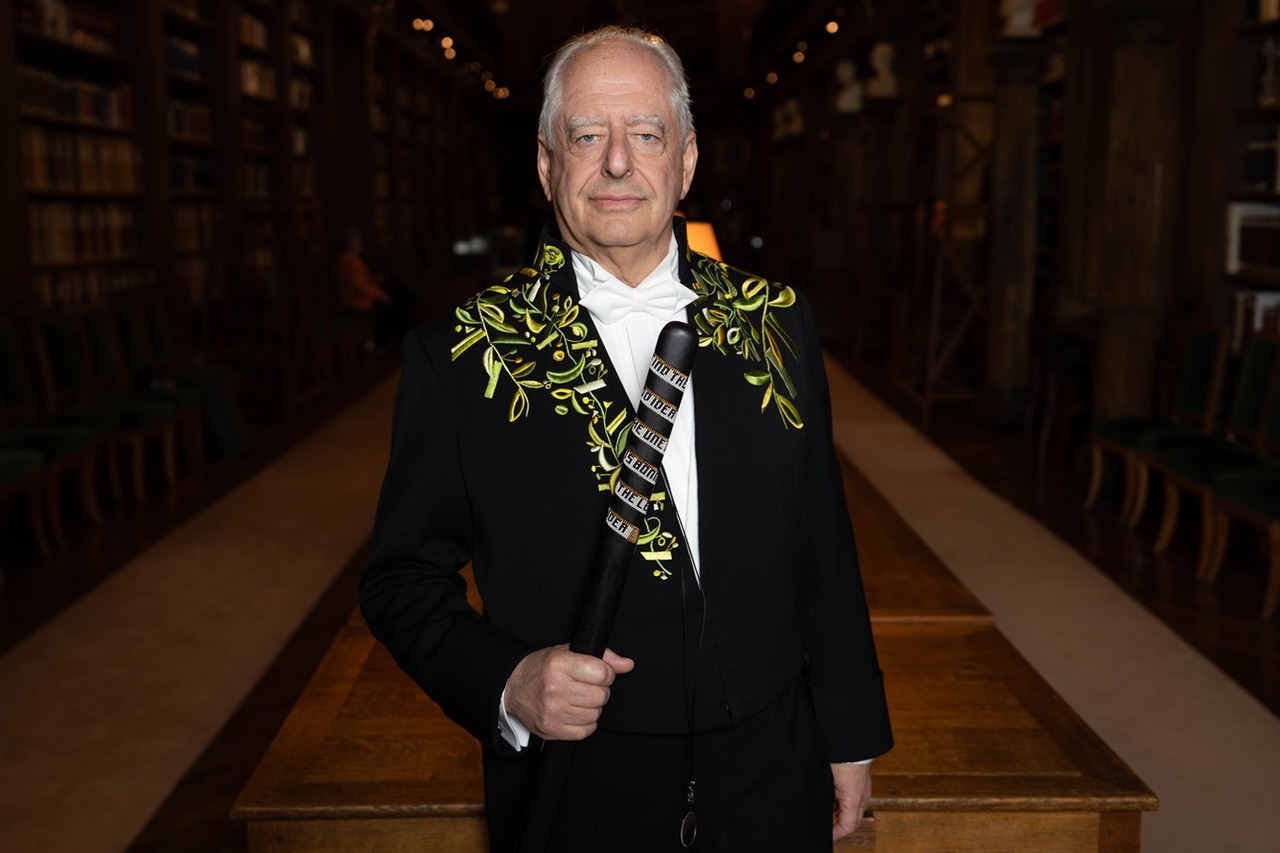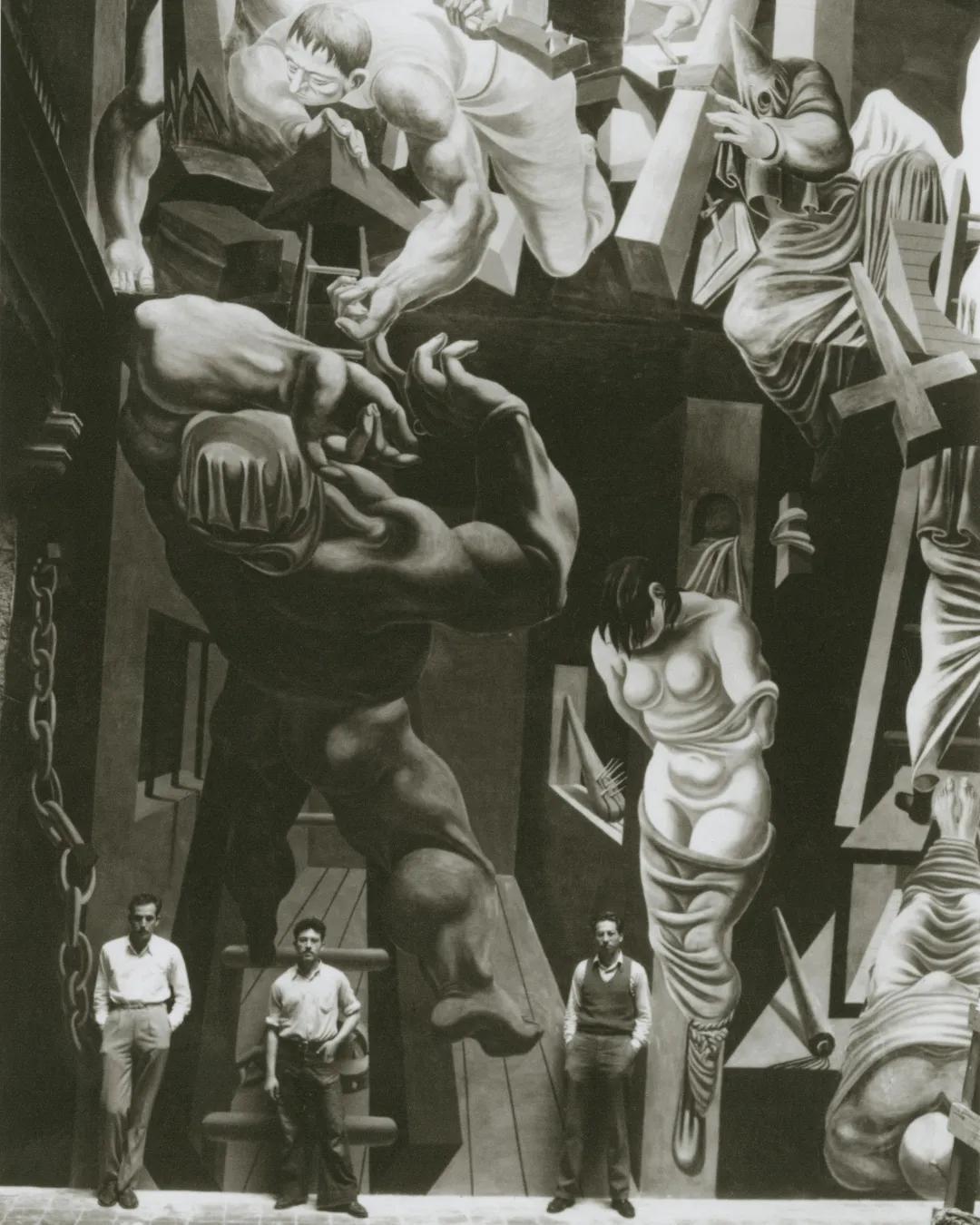Phyllida Barlow Outdoor Sculpture Unveiled in Somerset

Installation view, ‘Phyllida Barlow. unscripted,’ Hauser & Wirth Somerset, 2024 © Phyllida Barlow Estate. Photo: Ken Adlard
Phyllida Barlow Outdoor Sculpture Unveiled in Somerset
As part of ‘Phyllida Barlow. unscripted,’ curated by Frances Morris, a presentation of sculpture is on view across all of the outdoor spaces at our Somerset gallery, including works from the artist’s ‘PRANK’ series and works being shown in open air for the first time. The landmark exhibition brings together a collection of the artist’s signature elements from several major installations, including work made in the last year of Barlow’s life.
Beginning in the farmyard, a selection of sculptures disrupt the gallery’s exterior architectural spaces. Works such as ‘PRANK: jinx’ (2022 – 2023) tower over visitors on arrival. Previously included in Barlow’s exhibition ‘GIG’ which inaugurated the Somerset gallery 10 years ago in 2014, ‘untitled: megaphone’ (2014) and ‘untitled: stackedchairs’ (2014) overflow from the gallery’s granary building—a site which has never-before been used to exhibit works—parodying its original purpose for storing items such as grain. Two stacked boulder works, ‘untitled: triplestackboulders’ (2014) and ‘untitled: squatboulders’ (2014), previously exhibited at Yorkshire Sculpture Park for a several years, are nestled in the internal Cloister Courtyard.

Installation view, ‘Phyllida Barlow. unscripted,’ Hauser & Wirth Somerset, 2024 © Phyllida Barlow Estate. Photo: Ken Adlard

Installation view, ‘Phyllida Barlow. unscripted,’ Hauser & Wirth Somerset, 2024 © Phyllida Barlow Estate. Photo: Ken Adlard
The Oudolf Field is animated and disrupted by PRANK (2022 – 2023), a series of seven wonderfully—and deliberately—ungainly sculptures Barlow made for New York’s City Hall Park in 2023, shown for the first time in the UK.
Barlow based each steel and fiberglass sculpture on a familiar object that might be found at home or in an artist’s studio. The objects have been rotated, repeated, and stacked to create awkward, improbable structures. An oddly irregular white form first used by the artist in the early 1990s, known as ‘rabbit ears,’ appears on each angular steel assemblage.

Installation view, ‘Phyllida Barlow. unscripted,’ Hauser & Wirth Somerset, 2024 © Phyllida Barlow Estate. Photo: Ken Adlard

Installation view, ‘Phyllida Barlow. unscripted,’ Hauser & Wirth Somerset, 2024 © Phyllida Barlow Estate. Photo: Ken Adlard
PRANK was completed before Barlow’s untimely death in March 2023, and marks an important step as her first exhibition made with robust outdoor materials. At the same time, it returns to several longstanding themes and motifs. Variants of the comical ‘rabbit ears,’ defy gravity to scale stairs, grasp edges, and balance atop eccentric structures, as if performing. The title of each sculpture is a single evocative word: antic, hoax, jape, jinx, mimic, stunt, and truant. Together, they suggest an interest in the creative potential of disruption and rule breaking, a hallmark of Barlow’s art. Against such traditional sculptural values as balance, proportion, symmetry, and gravitas, her work offers absurdity, exuberance, vulnerability, and humor. In doing so, PRANK takes on the scale, materials and legacy of monumental outdoor sculpture and redefines it in Barlow’s own, indelibly human terms.
‘Phyllida Barlow kept her fans and followers on the edge of their seats as she brought new and ever more audacious projects to life in venues across the world. Unfolding as a running commentary on the tragedies and absurdities of our time, each work formed part of an ongoing and intensely experimental investigation into the techniques and materials of art making, seeking visual equivalents to her own personal experience of living and looking.’—Frances Morris

Phyllida Barlow and Frances Morris, 2015. Photo: Gary Doak / Alamy Stock Photo
About ‘Phyllida Barlow. unscripted’
The work of Phyllida Barlow (1944 – 2023) will take over Hauser & Wirth Somerset in a celebration of the British artist’s transformative approach to sculpture, marking the 10th anniversary of the arts center that was inaugurated by Barlow’s solo exhibition ‘GIG’ in 2014. The landmark exhibition, curated by Frances Morris, draws on her close working relationship with the artist during her lifetime. ‘Phyllida Barlow. unscripted’ will explore the evolution of Barlow’s formal and expressive vocabulary, bringing together singular sculptures, installations, studio maquettes and drawings from her extensive career, some of which will be on public view for the first time.
About Phyllida Barlow
For almost 60 years, British artist Phyllida Barlow took inspiration from her surroundings to create imposing installations that can be at once menacing and playful. She created large-scale yet anti-monumental sculptures from inexpensive, low-grade materials such as cardboard, fabric, plywood, polystyrene, scrim, plaster and cement. These constructions were often painted in industrial or vibrant colors, the seams of their construction left at times visible, revealing the means of their making. Barlow’s restless invented forms stretch the limits of mass, volume and height as they block, straddle and balance precariously. The audience is challenged into a new relationship with the sculptural object, the gallery environment and the world beyond. Barlow exhibited extensively across institutions internationally and in 2017 represented Britain at the Venice Biennale.
Related News
1 / 5




